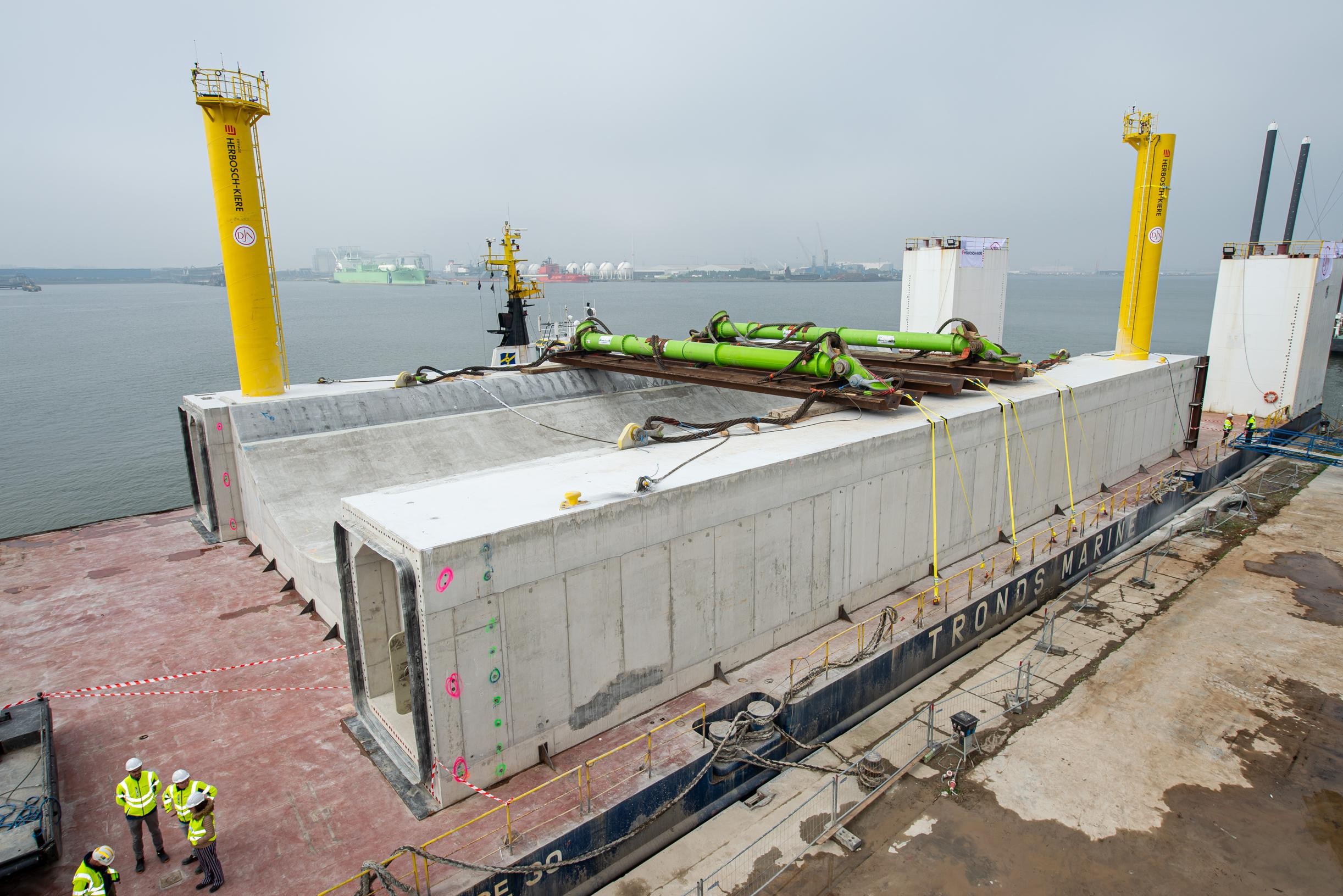A huge concrete barrier for storm surge barriers left Kallo, in the port of Antwerp, on Friday morning for the harbor channel in Nieuwpoort. From there, the colossus will protect our country against very heavy storm surges.
–
jvhBron: BELGIAN
—
The threshold is an important part of the storm surge barrier that the Agency for Maritime Services and Coast is currently building. The storm surge barrier will protect Nieuwpoort, and by extension the entire interior, from wetness.
Flemish Minister for Mobility and Public Works Lydia Peeters (Open VLD) came to see how the final touches were being put to the 23-meter wide, 42-meter-long and five-meter-high threshold. Later, a steel barrier will be built in the concrete threshold that can be erected in case of severe weather. “The construction of the storm surge barrier is unique for our country,” said Peeters. “Transport from Antwerp to Nieuwpoort is a real tour de force. The storm surge barrier is necessary to protect the hinterland against flooding.”
Vulnerable Coast
Coastal ports today are most at risk of flooding when severe storm surges occur. Nieuwpoort is also not yet prepared for the high water levels associated with severe storms, according to the minister. “The Flemish government is therefore investing 58 million euros in the construction of a storm surge barrier at the mouth of the Yser.”
The structure is one of the measures from the Coastal Safety Master Plan that must protect our entire coast against severe storm surges until 2050. This is desperately needed, according to Dirk Van Rompaey, director of Civil Works Jan De Nul Group. “Our Belgian coast is vulnerable to rising sea levels. The storm surge barrier must protect our 67 km coast.”
Technic
The threshold is a unique hydraulic engineering construction in which all the know-how and expertise of civil and maritime techniques come together. It is built on a pontoon that can sink. Two tugs tow the pontoon first through the Scheldt and then by sea to the port of Ostend, a journey that takes about twelve hours.
Upon arrival in Ostend, the threshold is hooked to a crane on a second pontoon. The concrete sill weighs more than 4,500 tons and will therefore be sunk so that the sill will be completely submerged. The load to be lifted is then ‘only’ 1,210 tons more. Once arrived, it is lowered between two abutments.
—


